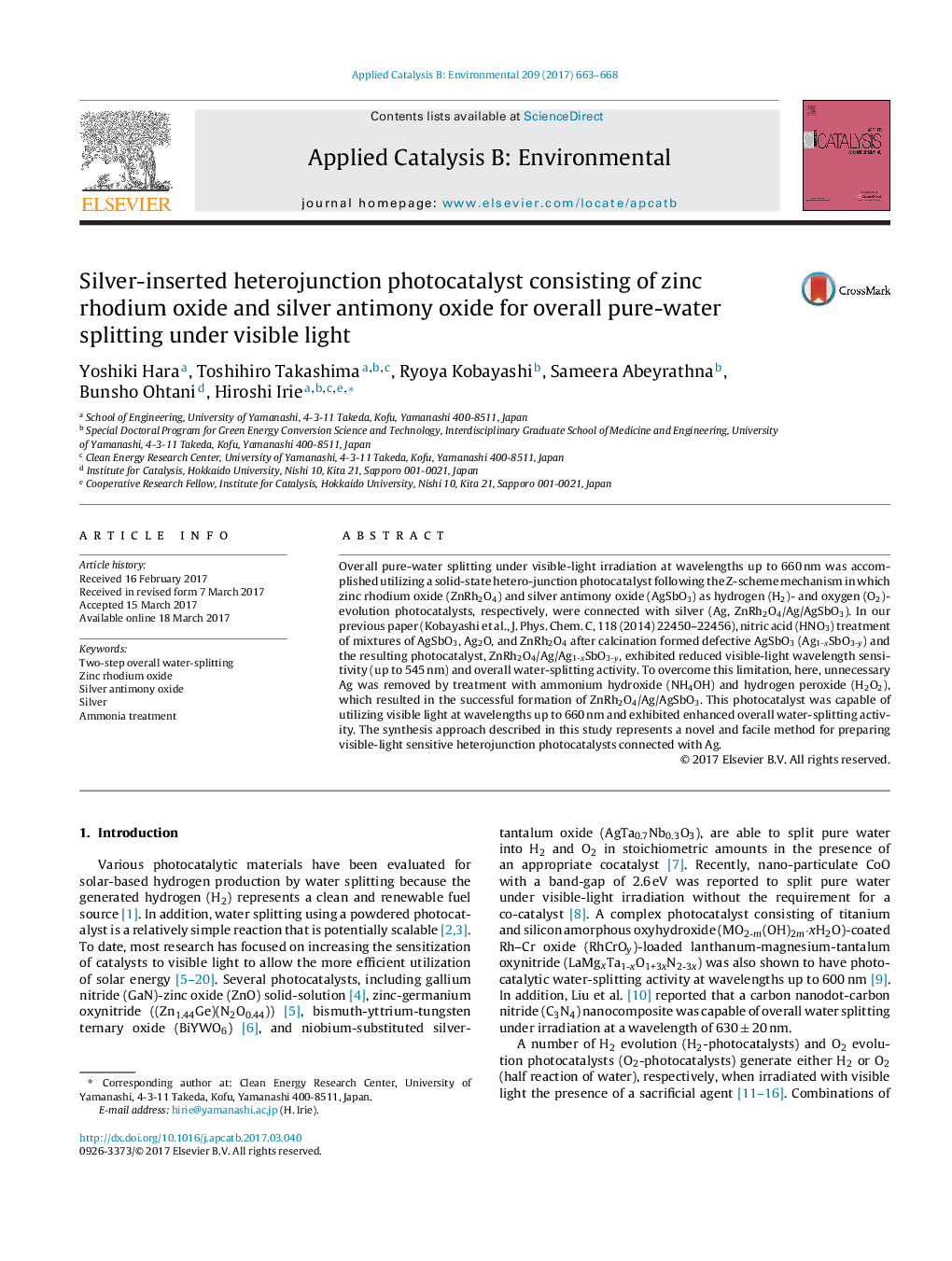| Article ID | Journal | Published Year | Pages | File Type |
|---|---|---|---|---|
| 6454257 | Applied Catalysis B: Environmental | 2017 | 6 Pages |
â¢We established a hetero-junction photocatalyst for overall pure-water splitting.â¢The photocatalyst is a solid-state Ag-inserted ZnRh2O4 andAgSbO3.â¢Ammonia and hydrogen peroxide treatments to remove excess Ag is required.â¢The photocatalyst is capable of utilizing visible at wavelengths up to 660 nm.
Overall pure-water splitting under visible-light irradiation at wavelengths up to 660Â nm was accomplished utilizing a solid-state hetero-junction photocatalyst following the Z-scheme mechanism in which zinc rhodium oxide (ZnRh2O4) and silver antimony oxide (AgSbO3) as hydrogen (H2)- and oxygen (O2)-evolution photocatalysts, respectively, were connected with silver (Ag, ZnRh2O4/Ag/AgSbO3). In our previous paper (Kobayashi et al., J. Phys. Chem. C, 118 (2014) 22450-22456), nitric acid (HNO3) treatment of mixtures of AgSbO3, Ag2O, and ZnRh2O4 after calcination formed defective AgSbO3 (Ag1-xSbO3-y) and the resulting photocatalyst, ZnRh2O4/Ag/Ag1-xSbO3-y, exhibited reduced visible-light wavelength sensitivity (up to 545Â nm) and overall water-splitting activity. To overcome this limitation, here, unnecessary Ag was removed by treatment with ammonium hydroxide (NH4OH) and hydrogen peroxide (H2O2), which resulted in the successful formation of ZnRh2O4/Ag/AgSbO3. This photocatalyst was capable of utilizing visible light at wavelengths up to 660Â nm and exhibited enhanced overall water-splitting activity. The synthesis approach described in this study represents a novel and facile method for preparing visible-light sensitive heterojunction photocatalysts connected with Ag.
Graphical abstractDownload high-res image (154KB)Download full-size image
